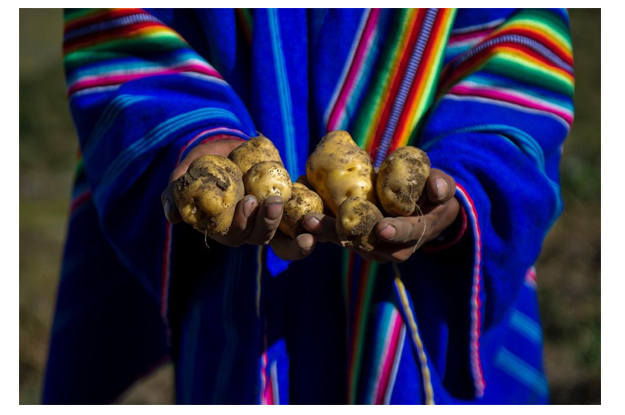
NASA, the US space agency, is conducting the pioneering experiment together with Lima’s International Potato Centre (CIP).
They will cultivate a hundred selected varieties already subjected to rigorous evaluation in extreme, Mars-like conditions that could eventually pave the way to building a dome on the Red Planet for farming the vegetable.
The selection was made from a total of 4,500 varieties registered at CIP, a non-profit research facility that aims to reduce poverty and achieve food security. Of the selected candidates, 40 are native to the Andes Mountains, conditioned to grow in different ecological zones, withstand sudden climate changes and reproduce in rocky, arid terrain.
The other 60 are improved varieties able to survive with little water and salt. They are also immune to viruses. Those that pass the tests must meet a final criterion — they must be able not only to grow well on Mars but also reproduce in large quantities.
“We’re almost 100% certain that many of the selected potatoes will past the tests,” said Julio Valdivia Silva, a Peruvian NASA astrobiologist taking part in the ambitious project.
The scientists hope the experiment will also help address the earthly scourges of hunger and malnutrition by identifying varieties suited to growing in harsh conditions.
“We must be prepared for the future,” said virologist Jan Kreuze, a scientist at CIP. “To respond to desertification, rising temperature and high salt content in the soil.”
The soil in La Joya Pampas - a sector of the Atacama Desert in southern Peru that’s considered one of the driest places on earth - is very similar to that found on the Red Planet.
The scientists plan to transport 200 pounds (100 kilos) of it to a CIP laboratory in Lima that will simulate the complex Martian atmosphere, which contains mostly carbon dioxide and expose it to extreme ultraviolet radiation.“We’ll have more concrete results in one or two years, Valdivia said, adding that it will take more than five years to launch an unmanned mission to Mars.
The potential future space crop is also one of the oldest.
Records of potato cultivation date back to 2500BC, when the indigenous Aymara Indians farmed it in modern-day Peru and Bolivia.
If the varieties selected for next month’s experiment don’t adapt to the desert soil, the researchers will introduce nutrients and subject them to radiation.
“If that doesn’t work,” Valdivia said, “we’ll administer a new method the CIP is using called aeroponics.”
Published in The Express Tribune, February 29th, 2016.
Like Business on Facebook, follow @TribuneBiz on Twitter to stay informed and join in the conversation.

1722586547-0/Untitled-design-(73)1722586547-0-165x106.webp)


1732326457-0/prime-(1)1732326457-0-165x106.webp)





1719053250-0/BeFunky-collage-(5)1719053250-0-270x192.webp)






COMMENTS
Comments are moderated and generally will be posted if they are on-topic and not abusive.
For more information, please see our Comments FAQ